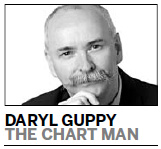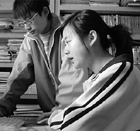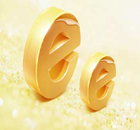InfoGraphic
Charting the ebb and flow of human emotion
By Daryl Guppy (China Daily)
Updated: 2010-05-04 09:52
 |
Large Medium Small |
Patterns reflect behavior, help prepare us for market developments
 Price activity is the result of human behavior. People do not randomly buy or sell in the market. The decision to buy or sell may be carefully considered, it may be a poor decision, or it may be an action later regretted. In all cases the decision contains an element of emotion and this emotional behavior is reflected in the movement of prices.
Price activity is the result of human behavior. People do not randomly buy or sell in the market. The decision to buy or sell may be carefully considered, it may be a poor decision, or it may be an action later regretted. In all cases the decision contains an element of emotion and this emotional behavior is reflected in the movement of prices.
The result, in some cases, is the development of a range of patterns of price behavior. These are chart patterns and they define the ebb and flow of human emotion as effectively as a cardiogram beside a hospital bed.
For convenience we give them descriptive names. There are patterns of enthusiasm such as rising trends and bullish flags. There are patterns of depression, such as down sloping triangles. The chart pattern that is of most interest at the moment in the equilateral triangle and the consequences of the Shanghai index breakout below this pattern over the past two weeks.
The equilateral triangle shows market indecision. Those who are bullish are almost evenly counterbalanced by those who are bearish. The market waits on news, and the measures taken to cool the property market are the news that has tipped the balance in this market pattern.
|
||||
The Shanghai market's plunge below 3000 on April 19 carried the index below the lower edge of the long term equilateral triangle. For a few days the index hovered near this level giving traders time to exit. Last week the market developed the expected behavior with an accelerating fall below 2900. This creates a very bearish situation.
There are three factors to consider.
1. The behavior of breakout strength in triangle chart patterns
2. The lower level support target areas
3. The behavior of leading trend reversal indicators, such as the Relative Strength Indicator (RSI)













